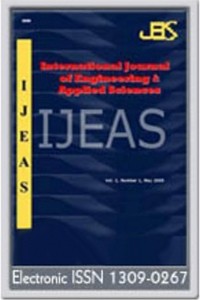Comparative Study on Facial Expression Recognition using Gabor and Dual-Tree Complex Wavelet Transforms
Moving from manually interaction with machines to automated systems, stressed on the importance of facial expression recognition for human computer interaction (HCI). In this article, an investigation and comparative study about the use of complex wavelet transforms for Facial Expression Recognition (FER) problem was conducted. Two complex wavelets were used as feature extractors; Gabor wavelets transform (GWT) and dual-tree complex wavelets transform (DT-CWT). Extracted feature vectors were fed to principal component analysis (PCA) or local binary patterns (LBP). Extensive experiments were carried out using three different databases, namely; JAFFE, CK and MUFE databases. For evaluation of the performance of the system, k-nearest neighbor (kNN), neural networks (NN) and support vector machines (SVM) classifiers were implemented. The obtained results show that the complex wavelet transform together with sophisticated classifiers can serve as a powerful tool for facial expression recognition problem.
Keywords:
facial expression recognition, complex wavelet transform, local binary pattern, principle component analysis, neural networks support vector machines,
___
- Z. Niu and X. Qiu, Facial expression recognition based on weighted principal component analysis and support vector machines, IEEE 3rd International Conference on Advanced Computer Theory and Engineering, pp. 174-178, 2010.
- K.T. Song and Y.W. Chen, A design for integrated face and facial expression recognition, 37th Annual conference on IEEE Industrial Electronics Society, pp. 4306-4311, 2011.
- A. Vinciarelli, M. Pantic, and H. Bourlard, Social signal processing survey of an emerging domain, Image and Vision Computing, pp.1743–1759, 2009.
- D. Lin, Facial expression classification using PCA and hierarchical radial basis function network, Journal of Information Science and Engineering, vol. 22, no. 5, pp. 1033-1046, 2006.
- A. Mehrabian. Communication without words, Psychology Today, vol.2, no.4, pp. 53-56, 1968.
- P. Ekman, and W. Friesen, Facial Action Coding System: A technique for the measurement of facial movements, Consulting Psychologists Press, California, 1978.
- Y. Yacoob, and L.S. Davis, Recognizing human facial expression from long image sequences using optical flow, IEEE Transactions on Pattern Analysis and Machine Intelligence, vol. 18, no. 6, pp. 636-642, 1996.
- R. Brunelli and T. Poggio, Face recognition: features vs. templates, IEEE Transaction on Pattern Analysis and Machine Intelligence, vol.15, no.10, pp. 1,042-1,053, 1993.
- A. Eleyan, and H. Demirel, Performance comparison among complex wavelet transforms based face recognition systems, Image Processing and Communication Conference, AISC84, pp. 201-209, August 2010.
- M. Turk and A. Pentland, Eigenfaces for recognition, Journal of Cognitive Neuroscience, vol.3, no.1, pp.71-86, 1991.
- Başlangıç: 2009
- Yayıncı: Akdeniz Üniversitesi
